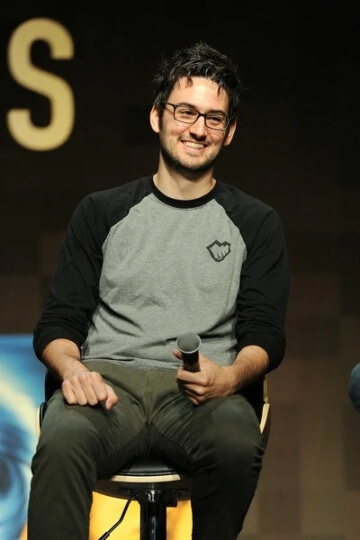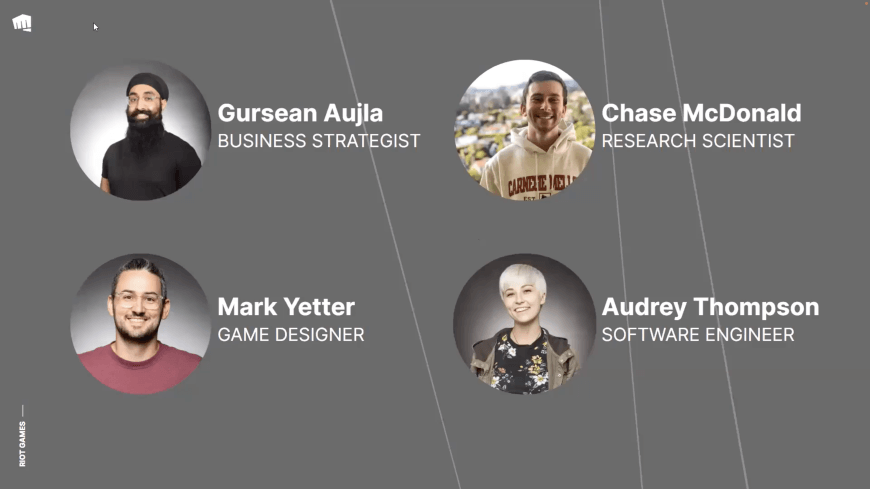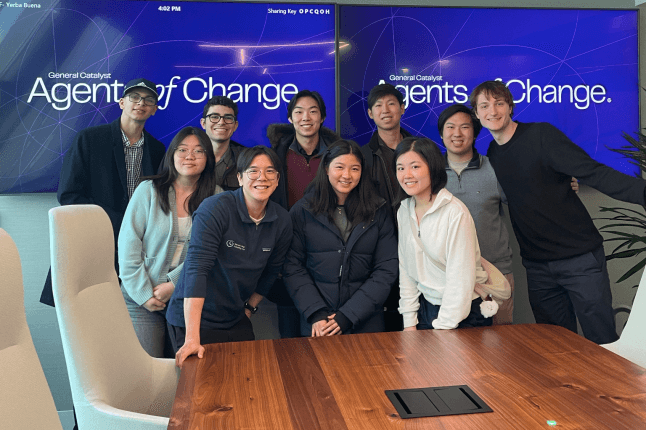News
Video game production has a place for all types of computer scientists and engineers. Game designers create the heroes and villains who’ll populate a world, or the mechanics that will let players achieve their goals. Software engineers improve the user experience for customers or other engineering teams within the company. Business strategists help their company make big decisions about technology and infrastructure. Scientists conduct cutting-edge artificial intelligence (AI) research that’s sometimes published or presented at conferences.
Mark Yetter, A.B. '08 and game design director and Riot Games (Credit: Mark Yetter)
Four members of California-based video game developer and publisher Riot Games recently participated in Industry Insights, an ongoing speaker series and platform for representatives from industry to share information and advice with students and community members at the Harvard John A. Paulson School of Engineering and Applied Sciences (SEAS). During these events, presenters discuss opportunities in the science and engineering sectors, new technology applications, and the ways that organizations are evolving to address challenges impacting society.
“A game development studio has different roles, skills and types of people to make the types of games that we make, operate the business, distribute the games around the world, market and publish the games, translate them, and run eSports tournaments and events,” said Mark Yetter, who earned an A.B. in computer science at SEAS in 2008 and is now game design director at Riot. “There are different ways to be involved and contribute to a game development studio, and they’re all pretty different experiences. Some of them have entirely different educational paths, skills and craft that you develop over time.”
Yetter, along with business strategist Gursean Aujla, research scientist Chase McDonald and software engineer Audrey Thompson introduced their roles at Riot. As game design director, Yetter has designed many of the characters for the studio’s signature gaming franchise, “League of Legends,” which has more than 180 million active players and is one of the most popular competitive eSports games worldwide.
“This is the rules, creative, systems and content design of a game experience,” Yetter said. “You need to define the mechanics, define the content, set goals and iterate the actual game experience to hit those goals. You’re often asking questions about what the player does, what the world is, and what the challenges are.”
Riot’s technology infrastructure has changed dramatically since Yetter was first hired in 2013, evolving from games based on servers to games that are hosted on cloud-based Amazon Web Services. Technology platform decisions are informed by people like Aujla and his business strategy team, which analyzes changing technologies and trends. Game design often produces the most obvious elements of a game, such as its characters, story or mechanics, but the best video game in the world still needs a system in place to support it.
“As a business strategist, I help the technical organization uncover problems, plan and execute solutions, and help our leaders make informed decisions,” Aujla said.
For McDonald, working at Riot is a chance to study real-time human-AI interaction and cooperation, a topic central to his ongoing Ph.D. research at Carnegie Mellon University. He’s applied AI in many ways at Riot, such as building bots that can test out new game features for fairness and balance ahead of their release.
“Video games provide an excellent setting for a simulated world where AIs can take actions, learn, and see outcomes change based on what they’ve learned,” McDonald said.
Four Industry Insights speakers from Riot Games
Software engineering teams then tie all these different elements together. Thompson mainly focuses on backend engineering, meaning the systems normally inaccessible to players or external users. Her advice to students interested in applying to gaming companies: for software engineers, focus on your technical portfolio; for designers, focus on the overall user experience of games in your portfolio.
“With a project you worked on in school, it’s not just the size of the specification or the programming language that you used for it, but also why you made it, and what parts of games you’re interested in,” she said. “Design is more about how game systems interact with a player, as opposed to how text systems interact with each other. Game engineering positions are like many other engineering positions, but with certain language and system constraints.”
Yetter added, “For engineers, it’s all about really efficient, really well-architected, really consistently bug-free technical implementation of an idea. It could be a game feature like a grenade model, or it could be the back end for storing tons and tons of player challenges data. There are lots of very hard, technical problems that need to be solved excellently for a game to do well.”
SEAS students wanting to study video game design can enroll in several SEAS courses, such as CS50: Introduction to Computer Science,” where gaming can be incorporated into a final project, and an online CS50 course focused on game development available at HarvardX. They can also cross-register with MIT, which offers several courses on the subject. Extracurricular opportunities include the Harvard Undergraduate Game Developers, a SEAS-affiliated student club.
“I was in the ‘League of Legends’ club at my school,” Thompson said. “Of the 30-40 people I knew from there, five or six of us now work at Riot.”
Even for those unable to take classes in game design, there are still ways to develop professional skills. Yetter recommended studying computer science, visual arts or production-style project management, creating an independent game in your spare time, or even designing a board game.
“My advice is to develop whatever your skills are outside of game design, because they’re helpful to pair with it later, and then moonlight the game design,” Yetter said. “The goal doesn’t have to be to make millions of dollars selling your own games, but just getting practice and having something to demonstrate on applications.”
Topics: Computer Science
Cutting-edge science delivered direct to your inbox.
Join the Harvard SEAS mailing list.
Press Contact
Matt Goisman | mgoisman@g.harvard.edu




